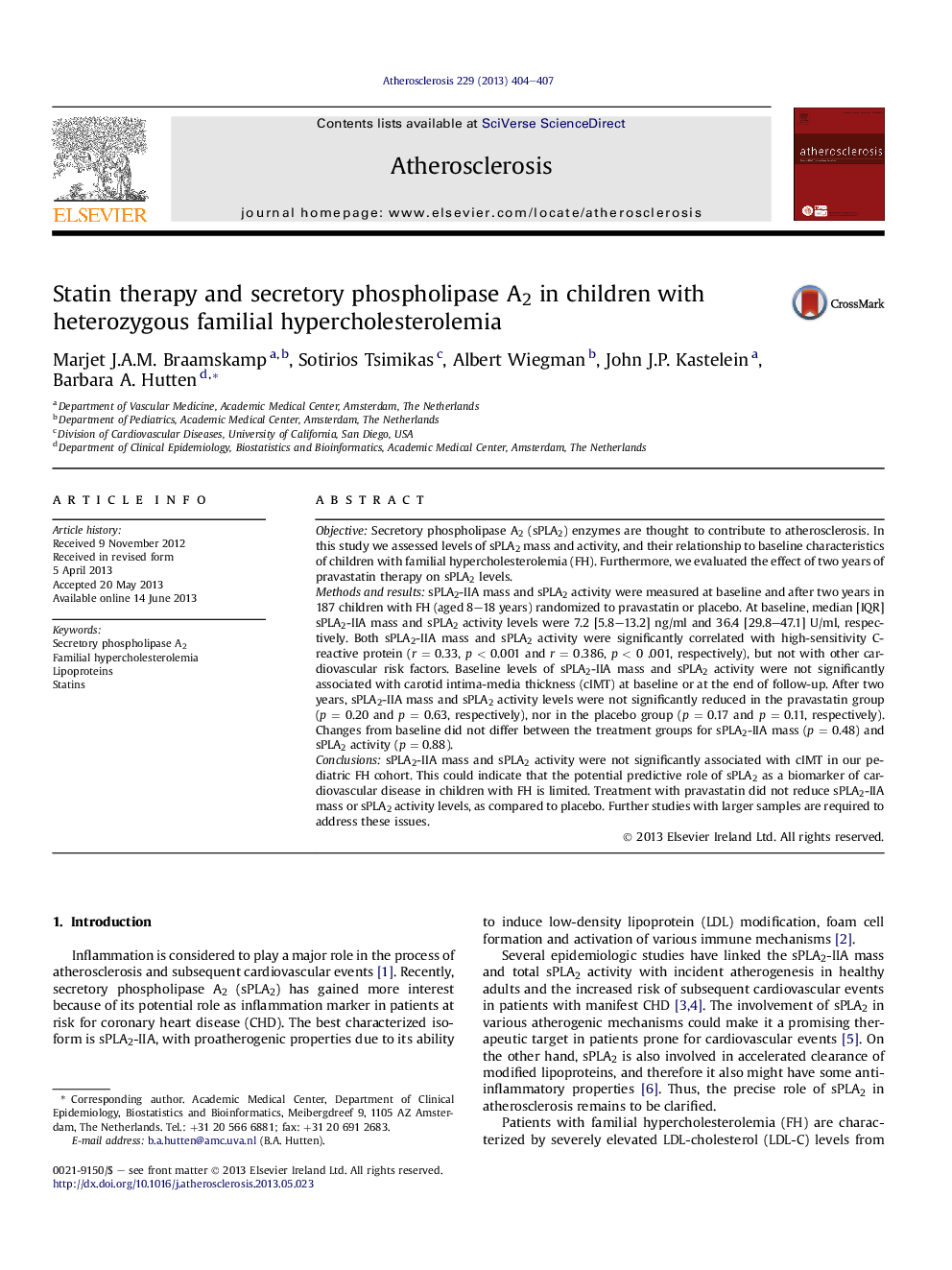| کد مقاله | کد نشریه | سال انتشار | مقاله انگلیسی | نسخه تمام متن |
|---|---|---|---|---|
| 5947430 | 1172368 | 2013 | 4 صفحه PDF | دانلود رایگان |

- sPLA2 was measured in FH children treated for 2 years with placebo or pravastatin.
- Treatment with pravastatin did not reduce sPLA2-IIA mass or sPLA2 activity levels.
- sPLA2-IIA mass and sPLA2 activity were significantly associated with hsCRP.
- No association was found between sPLA2 and cIMT or any other cardiovascular risk marker.
ObjectiveSecretory phospholipase A2 (sPLA2) enzymes are thought to contribute to atherosclerosis. In this study we assessed levels of sPLA2 mass and activity, and their relationship to baseline characteristics of children with familial hypercholesterolemia (FH). Furthermore, we evaluated the effect of two years of pravastatin therapy on sPLA2 levels.Methods and resultssPLA2-IIA mass and sPLA2 activity were measured at baseline and after two years in 187 children with FH (aged 8-18 years) randomized to pravastatin or placebo. At baseline, median [IQR] sPLA2-IIA mass and sPLA2 activity levels were 7.2 [5.8-13.2] ng/ml and 36.4 [29.8-47.1] U/ml, respectively. Both sPLA2-IIA mass and sPLA2 activity were significantly correlated with high-sensitivity C-reactive protein (r = 0.33, p < 0.001 and r = 0.386, p < 0 .001, respectively), but not with other cardiovascular risk factors. Baseline levels of sPLA2-IIA mass and sPLA2 activity were not significantly associated with carotid intima-media thickness (cIMT) at baseline or at the end of follow-up. After two years, sPLA2-IIA mass and sPLA2 activity levels were not significantly reduced in the pravastatin group (p = 0.20 and p = 0.63, respectively), nor in the placebo group (p = 0.17 and p = 0.11, respectively). Changes from baseline did not differ between the treatment groups for sPLA2-IIA mass (p = 0.48) and sPLA2 activity (p = 0.88).ConclusionssPLA2-IIA mass and sPLA2 activity were not significantly associated with cIMT in our pediatric FH cohort. This could indicate that the potential predictive role of sPLA2 as a biomarker of cardiovascular disease in children with FH is limited. Treatment with pravastatin did not reduce sPLA2-IIA mass or sPLA2 activity levels, as compared to placebo. Further studies with larger samples are required to address these issues.
Journal: Atherosclerosis - Volume 229, Issue 2, August 2013, Pages 404-407